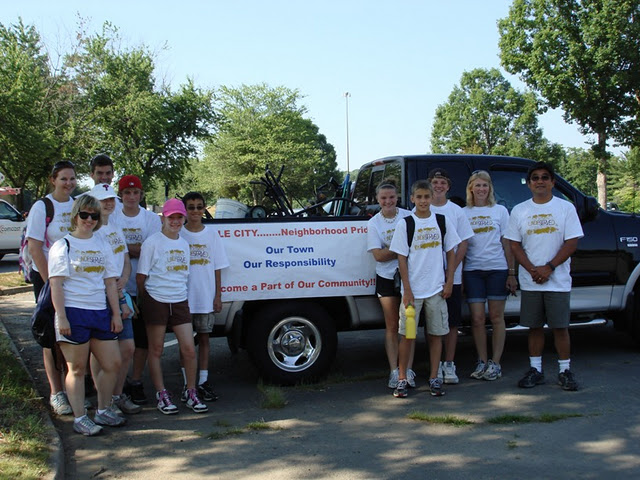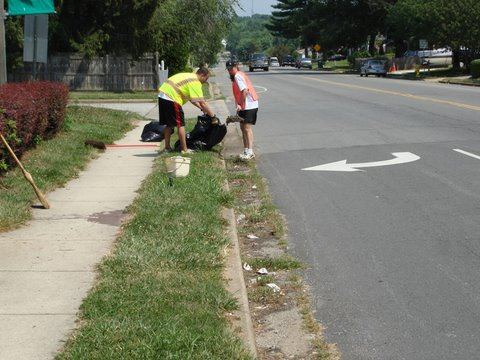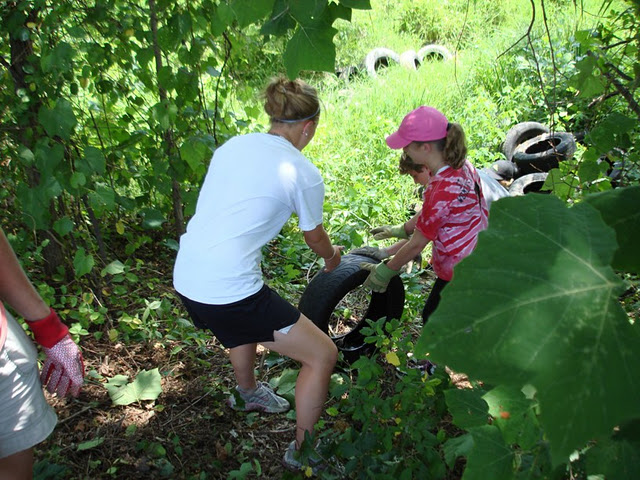Property Code Enforcement the Neighborly Way
Neighborhood Watch groups bridge the gap between residents and code enforcers to create healthier, happier communities.
 Tone-deaf travelers take heed; North Carolina state law prohibits you from singing out of tune! As for allergy sufferers, you might want to steer clear of Waterville, Maine, where it is illegal to blow your nose in public! Fact is, many such quirky, antiquated (and, thankfully, rarely enforced) ordinances remain on state and local books, eliciting a chuckle and begging the question ‘Just what were the legislators thinking?’ Fortunately, most modern city ordinances do make sense, having been designed to keep residents safe and secure as well as improve the community’s overall quality of life. Without regulations and enforcement, one neighbor’s heaping trash dump becomes a breeding ground for rats and vermin, while another’s failure to install smoke detectors or maintain fire escapes endangers the lives of tenants.
Tone-deaf travelers take heed; North Carolina state law prohibits you from singing out of tune! As for allergy sufferers, you might want to steer clear of Waterville, Maine, where it is illegal to blow your nose in public! Fact is, many such quirky, antiquated (and, thankfully, rarely enforced) ordinances remain on state and local books, eliciting a chuckle and begging the question ‘Just what were the legislators thinking?’ Fortunately, most modern city ordinances do make sense, having been designed to keep residents safe and secure as well as improve the community’s overall quality of life. Without regulations and enforcement, one neighbor’s heaping trash dump becomes a breeding ground for rats and vermin, while another’s failure to install smoke detectors or maintain fire escapes endangers the lives of tenants.
Crime prevention specialists know that property neglect sends a negative message—Our Neighborhood Just Doesn’t Care—which perpetuates further decay, lowers property values, and attracts the criminal element. Partnerships with city and county code enforcement officials, as well as with local law enforcement and fire safety officers, are a golden opportunity for Neighborhood Watch groups to build long-term relationships while educating residents, ensuring property code compliance, and helping individuals in need of assistance. This month, we examine the unique relationship one Virginia city code enforcement agency has cultivated with area crime prevention and neighborhood civic associations and the groups’ many accomplishments.
A Model Relationship
 In Dale City, a District of Columbia suburb located in Prince William County, code enforcement officials enjoy a close relationship with area crime watch groups. “Neighborhood Watch is code enforcement,” explains Pat Reilly, Neighborhood Services Division Chief. “There is such a close tie between property maintenance and community activity; they go hand in hand.” As part of its educational program, the Neighborhood Services Division emphasizes the importance of neighborhood crime prevention. “We do a lot of community outreach and often encourage groups to form a Neighborhood Watch. That way, they have a reason to stay connected with their neighbors,” said Reilly.
In Dale City, a District of Columbia suburb located in Prince William County, code enforcement officials enjoy a close relationship with area crime watch groups. “Neighborhood Watch is code enforcement,” explains Pat Reilly, Neighborhood Services Division Chief. “There is such a close tie between property maintenance and community activity; they go hand in hand.” As part of its educational program, the Neighborhood Services Division emphasizes the importance of neighborhood crime prevention. “We do a lot of community outreach and often encourage groups to form a Neighborhood Watch. That way, they have a reason to stay connected with their neighbors,” said Reilly.
 Prince William County is also home to a second organization that serves as a liaison between the code enforcement office, residents, Neighborhood Watch and other civic groups. Specifically, the Neighborhood Leaders Group brings together individuals interested in neighborhood improvements and the county staff responsible for preventing neighborhood deterioration. Together, group members strategize solutions to neighborhood problems, provide input to county staff on enforcement issues, learn about property maintenance codes, and implement action plans. Special projects range from organizing county cleanup days to performing exterior home repairs for economically distressed residents. Last June, for example, a Manassas city cleanup hosted by Neighborhood Watch netted three roll-off dumpsters full of trash—and group volunteers recruited 20 new members!
Prince William County is also home to a second organization that serves as a liaison between the code enforcement office, residents, Neighborhood Watch and other civic groups. Specifically, the Neighborhood Leaders Group brings together individuals interested in neighborhood improvements and the county staff responsible for preventing neighborhood deterioration. Together, group members strategize solutions to neighborhood problems, provide input to county staff on enforcement issues, learn about property maintenance codes, and implement action plans. Special projects range from organizing county cleanup days to performing exterior home repairs for economically distressed residents. Last June, for example, a Manassas city cleanup hosted by Neighborhood Watch netted three roll-off dumpsters full of trash—and group volunteers recruited 20 new members!
First Contact
Admittedly, approaching a neighbor to address a property code violation can be awkward, especially if the two parties are unacquainted or already on bad terms. However, experience shows that an upbeat, positive attitude coupled with perseverance can influence behavior more effectively than accusations or threats to call the authorities.
Getting started is usually the most difficult step. All too often, we gripe to family and friends about the neighbor’s barking dog or overgrown lawn, but never actually confront the offending party face to face. Instead, we let our anger fester to the point that we stop engaging in friendly chat with the neighbor, who is insulted by the unexplained aloofness. Consequently, the situation soon deteriorates into a modern-day Hatfield versus McCoy-style feud! To prevent tensions from escalating and help neighbors successfully resolve such code-related disputes privately, the Prince William County Neighborhood Services Division has produced a brochure titled “Approaching Neighbors on Difficult Topics.”. Among its many helpful insights are: speak calmly and respectfully, never automatically assume that you are right and your neighbor is wrong, and always end the conversation with an action plan. To illustrate: “Thank you for understanding, Jim. I’ll bring my mower over Saturday morning so we can get started.”
In ethnically diverse communities, language and cultural barriers may complicate communications; however, these challenges are by no means insurmountable. “First of all, never assume that language is a problem,” Reilly explains. “But, if you find it is, a lot of times you will find someone else in the neighborhood who speaks the language and can approach the neighbor.” When interacting with residents from other cultures, it is also wise to acknowledge that code violations may be unintentional, as practices that are illegal here may be acceptable elsewhere. In such cases, Reilly recommends clearly explaining why the code exists, while reassuring the individual that the neighborhood cares and doesn’t want him or her to experience legal ramifications stemming from the violation.
For the Common Good
We probably have more in common with the neighborhood “bad apple”—that crabby individual whose overgrown yard is decorated with rusted cars on cinder blocks—than we sometimes care to admit. “We all want to live in a safe community, one that is healthy for our families. That’s basic reason,” Reilly says. Again, emphasizing common concerns while expressing interest in the offender’s well-being are keys to effecting a change of behavior. “What’s more important than the ‘why’ of the code is to show that you’re glad that they are in the neighborhood, that you care about them and don’t want to see bad things happen to them because of a code violation.” Reilly suggests nonjudgmentally explaining why the code exists and the consequences of noncompliance. For instance, trash on a busy curb might obstruct drivers’ ability to see children crossing the road and the city could impose monetary fines or take legal action. Finally, whenever feasible, Reilly recommends extending an offer to help the violator by providing tools, equipment, or labor.
Educate and Inform
Education and training are the most effective methods crime prevention groups can use when working in partnership with code enforcement agencies. “Neighborhood Watches can pass out information at special events such as National Night Out,” says Reilly. “In Dale City, we started Neighborhood Pride Week. During the event, we invite code officials in to educate and explain the rules and how they can help individuals.” The goal, she says, is to help residents understand the connection between property maintenance and criminal activity. “When Neighborhood Watch is recruiting members, it is important to stress that code violations say ‘nobody cares about the community.’ This benefits [our division] because residents learn about codes and why they are necessary. It’s a win-win situation.”
Neighborhood Pride Week is also an opportunity to educate by example. During the event, volunteers take part in trash cleanups and help to mow, edge, and trim the two-and-a-half mile stretch of curb along the Dale Boulevard parade route, where 10,000 visitors gather for the city’s annual July 4th celebration. Prior to commencing cleanup activities, the Dale City Civic Association sends letters to residents along the parade route explaining the group’s goals and offering help to older and infirmed residents who are unable to trim shrubbery or remove trash and debris. “We should and we can feel proud of our community,” states Connie Moser, president of the Dale City Civic Association and a charter member of the Neighborhood Leaders Group. “Your surrounds exemplify your commitment to your family and your neighbors. That’s a good reason to get involved in community issues.”
Additional Educational Resources
A host of federal and national nonprofit informational resources are available to supplement Neighborhood Watch efforts to educate residents and caregivers about property codes and home safety. These include the:
- Centers for Disease Control and Prevention
- Injury Prevention and Control Home and Recreational Safety
- American Association of Retired Persons “Caregiving Checklist”
- National Fire Protection Association Safety Information
- National Safety Council “Safety at Home”
Continuing education is vital for neighborhood volunteers, as well. In Dale City, inspectors and intake technicians from the city’s Property Code Enforcement branch make regular presentations to keep the Neighborhood Leaders and Neighborhood Watch members current on issues such as zoning, occupancy and overcrowding regulations, and vegetation and refuse ordinances. Volunteer leaders also participate in events such as International City/County Managers Association audio-conferences, whose past offerings have included “The Power of Community Building”, a training and zoning administrator presentation on “Dillon’s Law,” a Virginia regulation that requires localities to obtain permission from the state before enacting certain kinds of legislation.
The Tip of the Iceberg?
Unmowed grass and peeling paint are more than just eyesores. Often, they are the first publicly visible signs that a neighbor is “ill” or becoming “incapacitated”, or has fallen on hard financial times. Health problems, including age-related physical infirmities and memory disorders such as Alzheimer’s disease, can sideline formerly meticulous homeowners, making home upkeep difficult or even impossible. Loss of income and debt, whether due to illness or other economic woes, may also prevent residents from completing needed home repairs, making those propertied vulnerable targets for criminal activity, including burglary, vandalism, or worse.
Crime prevention groups can help neighbors in need by organizing special volunteer projects either alone or in partnership with organizations such as Triad, Rebuilding Together and Habitat for Humanity. Also, in many communities, law enforcement and local emergency response providers will conduct complementary home safety checks, while commercial manufacturers often will donate fire alarm systems, nightlights, door peephole viewers, and other safety devices to older adults and the economically disadvantaged. Neighborhood Watch volunteers with carpentry skills can help these efforts by organizing and completing special installation projects for needy recipients.
Local not-for-profit and faith-based groups are another excellent source of assistance in many communities. Dale City neighborhood leaders collaborate with organizations such as Project-MendA- House, whose volunteer carpenters, electricians, plumbers, and painters perform home repairs for low-income and disabled county residents. The City of Manassas hosts an annual Week of Hope event prior to Neighborhood Pride Week. Last June, for the consecutive fifth year, the city teamed up with youth volunteers and their adult leaders from Group Cares of Colorado, which conducts mission trips to help revitalize communities. Projects, undertaken during the week, included mowing lawns for disabled residents, replacing a broken fence, and cleaning the homes of two individuals suffering from compulsive hoarding disorder.
A resource database is another useful tool that Neighborhood Watch groups can access to refer needy community members to assistance providers. Below is a sampling (not all-inclusive) of federal government and nonprofit programs available nationwide. Note that state and local assistance are also available in many communities.
- The U.S. Department of Energy sponsors grants to be used for weatherizing homes, of those in the low-income bracket, to make them more energy efficient. Projects may include weather-stripping doors, replacing windows, insulating walls and attics, and rewiring electrical systems.
- The U.S. Department of Agriculture’s Very Low-Income Housing Repair Program provides grants of up to $7,500, to older residents living in rural areas, to cover home repair and renovations after the removal of home hazards.
- U.S. Department of Veteran Affairs grants help fund home renovation and modification projects to help veterans with disabilities.
- The Habitat for Humanity’s A Brush with Kindness program offers exterior home painting, weather stripping, and minor repair services to low-income homeowners impacted by age, disability, and family circumstances.
- National nonprofit Rebuilding Together works with a network of affiliates to provide free home repairs to homeowners in need.



